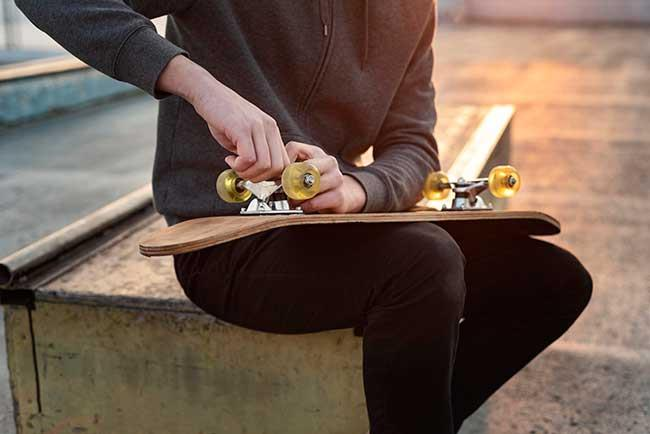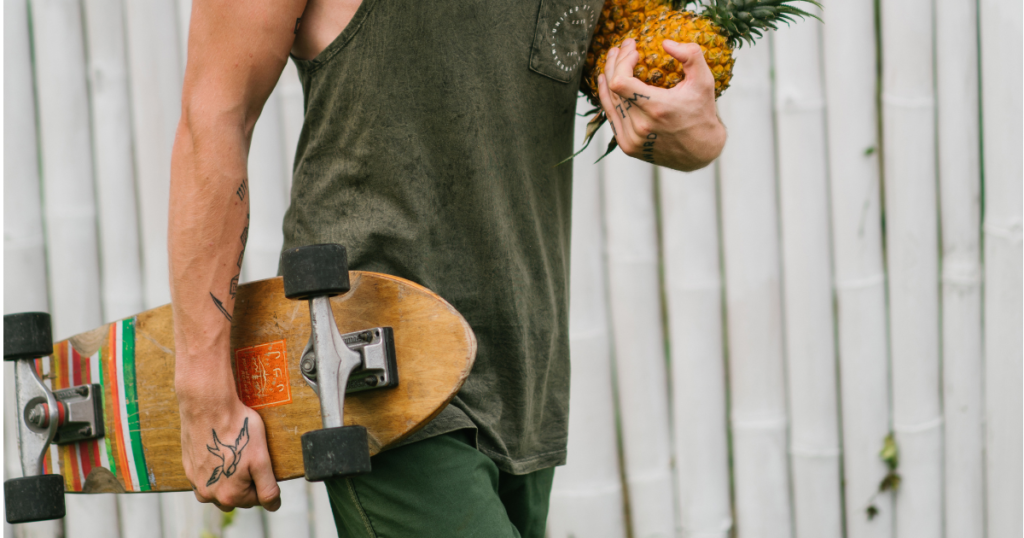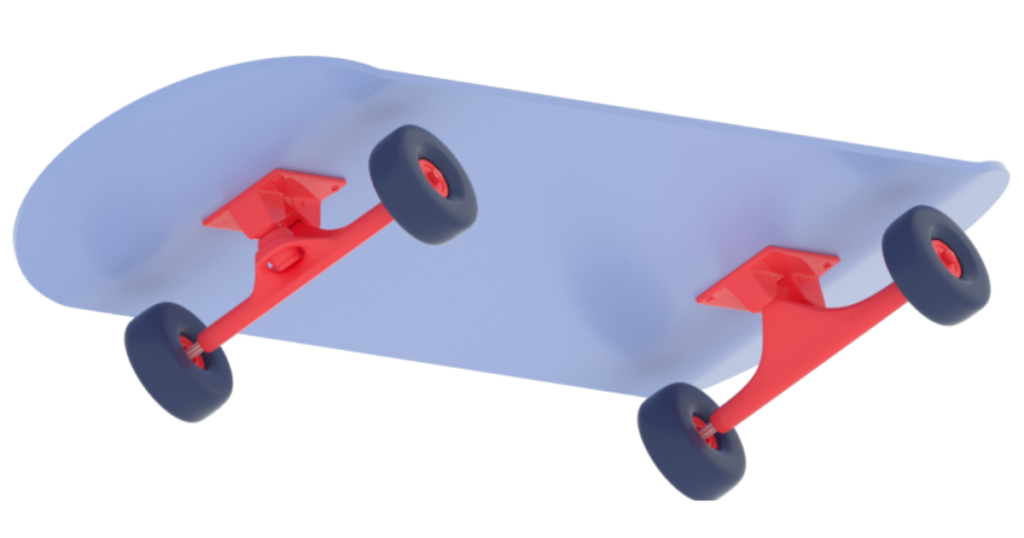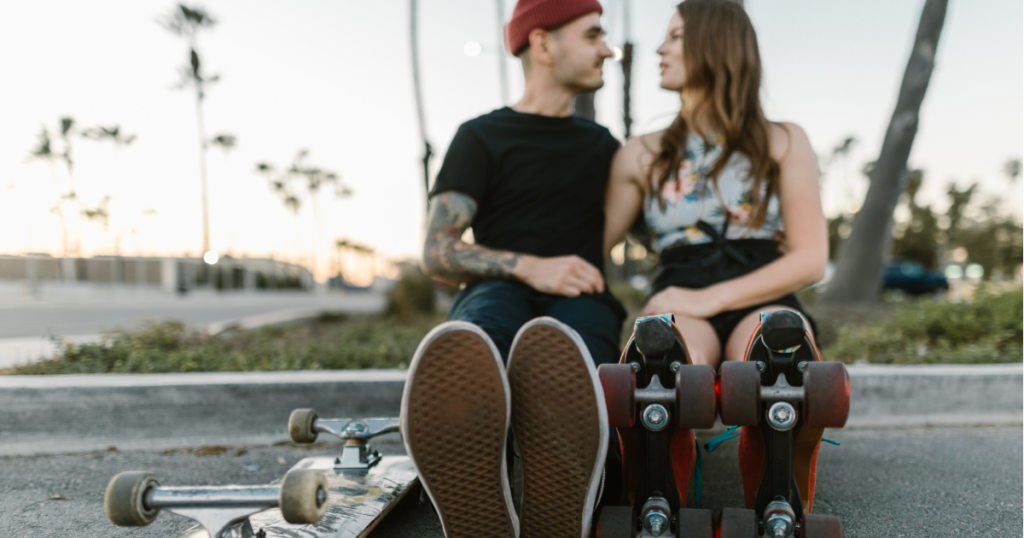Introduction(How Tight Should Skateboard Wheels Be? )
How Tight Should Skateboard Wheels Be? Skateboarding is not just a sport, but also a way of life and an outlet for one’s individuality and creativity. When it comes to the process of personalizing your skateboard, one issue that is sometimes forgotten is the degree to which your skateboard wheels are tightened. The degree to which your wheels are torqued may have a considerable influence on the riding experience you have. It influences characteristics like stability, speed, maneuverability, and comfort in general. In this article, we will gain knowledge about the complexities of skateboard wheel tightness. In order to assist you in finding the ideal equilibrium for your preferred riding style and personal preferences this is a very beneficial post.
Skateboard wheels come in a plethora of brands, types, sizes, colors, and durometers to meet every rider’s preference. You will have a difficult time locating any other component of your skateboard that has a greater influence on your ability to roll, move, and turn than your wheels do. How Tight Should Skateboard Wheels Be?
Those who want to fulfill their craving for speed will almost unanimously agree that tight skateboard wheels perform so much better and give superior stability. This article is going to assist you in characterizing how tight the wheels on your skateboard should be. The answer to this question is very dependent on your degree of driving expertise, driving style, as well as your level of concern for safety and comfort. Click here

How Tight Should Skateboard Wheels Be?
The diameter of the P-wheels skateboard is in mm, and most wheels are 50 to 75 mm in diameter, with the smaller the number, the smaller the wheels.
The diameter of the wheel also affects the speed of acceleration and the tightness of rotation. When the wheel is small, the operation is slow, and when the wheel is large, the operation is fast. Also, the low elevation from the ground and the easy control usually make the small wheels ideal for technical and street skating. If you are a beginner or use skateboarding as a daily means of transportation, you need to use a large wheel instead. Large diameters perfectly combine speed and balance, making them ideal for unobtrusive cruising or vertical skating.
Height and weight may also affect wheal size.
50-53mm The small, slow wheels are stable for trick riding, while the small riders skate through the streets, skate parks and bowls.
54-59mm The average wheelsize for beginners and large riders to slide through the streets, skate parks, bowls and bar ramps.
60mm + Specialty rider that slides long board, old school board, downhill and dirt board.
If you have a lot of cruising, you might want to have a loose wheel to get a smooth ride. If the wheel is loose, the board can more easily roll over the steps and cracks. However, controlling the board and tricks can be difficult.
topographical features
If you skate on rough terrain, tight wheels will be good to prevent wobble. Tight wheels will stabilize the board and make it easier to overcome obstacles.
If you skate on smooth terrain, you can afford to loosen the wheels. Loose wheels provide a smooth ride, making it easier to turn and cruise.
Understanding the Degree of Wheel Tightness
Axle nuts are used to link the wheels of skateboards to the trucks, and these nuts may be tightened or loosened to change how securely the wheels are joined. The amount of pressure that is given to the bearings of the wheels is what is used to determine how easily the wheels may spin, which is how wheel tightness is assessed. There are two basic gradations of tightness, which are as follows:
1. Locked and Loaded:
How Tight Should Skateboard Wheels Be? Wheels with little play and little movement side to side have been described as “tight.” They provide the rider with more control and stability even while traveling at high speeds. Because wheels with a higher degree of concentricity are less likely to wobble, they are better suited for descending steep terrain and traveling at fast speeds. On the other hand, they could lose part of their mobility and their ability to perform effectively in technical feats.
2. Wheels off the Tracks:
Wheels that are not tightly secured allow for more side-to-side mobility, which in turn enables faster spins and tricks. When it comes to street skating, flip tricks, and carving, they provide a feel that is more agile and responsive. Loose wheels may be detrimental to a vehicle’s speed and stability since they are more likely to wobble while traveling at higher speeds. Click here
When determining how tight the wheels on your skateboard should be, the following attention should be paid:

1. Riding Technique:
Which of these types of skating do you engage in most frequently: street skating, vert skating, downhill, or cruising? Your riding style will have a significant impact on the degree of wheel tightness that you choose.
2. Where you are:
It is important to pay attention to the territory you skate on. Skateboards and other smooth surfaces, such as pavement, may benefit from wheels with a tighter urethane compound. While rougher space may necessitate wheels with a looser urethane compound.
3. Preferences of the Individual:
A person’s riding style and degree of comfort are completely unique to them. Try out a few various degrees of wheel tightness until you discover the one that works best for you.
4. Competence Level:
Generally, new Skaters choose wheels with a tighter perseverance for more stability. While more experienced skaters frequently favor wheels with a looser perseverance for greater mobility and responsiveness. How Tight Should Skateboard Wheels Be?
5. Suitable Balance
Experimentation is necessary in order to establish the optimal level of wheel tightness. You should begin with a setting that is relatively tight, and then progressively change it until you reach the ideal balance for your requirements.
A few more points to consider and pointers with relation to the tightness of the skateboard wheel
Step-by-step instructions to get
1. Initial Position:
- To get started, tighten the wheels to a level where there is little side-to-side motion but the wheels may still spin reasonably freely. This is known as the baseline setting.
- Take your skateboard out for a spin on the terrain that you like to ride it on to get a feel for it. Pay close attention to how it acts as well as how it feels.
- Fine-tuning entails making a few minute modifications to the tightness of your wheels based on the results of your test ride. If you want a greater degree of mobility, slightly loosen them, and if you want a greater degree of stability, slightly tighten them.
2. Iterate
- Continue this process of testing and fine-tuning until you discover the wheel tightness that gives the optimal blend of stability and maneuverability for your preferred method of riding.
3. Protected and Encumbered:
- Stability: A skateboard with tight wheels provides a more solid platform for the rider. This stability is especially advantageous for riders who prefer going downhill at high speeds or cruising over long distances since it allows for more control. Because there is less movement from side to side, it is much simpler to keep control of the vehicle while it is moving quickly.
- Reduced Wobble:
- Wheels with a higher degree of tightness have a lower propensity to wobble at high speeds, which boosts rider confidence and increases safety while negotiating steep inclines or crowded city streets.
- A Longer Wheel Life: Because tight wheels encounter less friction and lateral movement, they tend to wear down more slowly, which results in a longer lifetime for your wheels. This is because tight wheels have a smaller contact patch, which reduces the amount of wear and tear on the wheel.
- Consistency: Skaters who place high importance on having a skating experience that is consistent may choose tight wheels because of the consistent sensation they provide all the way through the ride.
- Performances on the Downhill Skateboarders who ride downhill typically choose to use tight wheels so that they can keep their balance and control even at blazing speeds. Increased traction on quick corners may also be achieved by using wheels with a tighter rim profile.

4. Controlsoff the Pathways:
- Ability to Maneuver: Having loose wheels gives you greater flexibility to make sharp turns and do technical stunts. Street skaters and others who like sessions at skateparks often choose looser wheels because of the increased agility that they provide.
- Carving: If you prefer carving and cruising with a surf-like feel, looser wheels will enable you to lean into turns and carve with ease. Carving is a subgenre of longboarding.
- Shock Absorption: When traveling over difficult or uneven terrain, having wheels with greater play in them allows them to absorb more shock and vibration which results in a ride that is smoother and more pleasant.
- Skateboarders who put an emphasis on transition skating, such as riding in skate bowls or half pipes, often choose wheels with a looser stance so that they can better adapt to the curved surfaces and rapid transitions that they encounter.
5. Tightness Level Intermediate:
If you are unclear on how to begin adjusting the wheel tightness, one option to explore is starting in the center. This creates a happy medium between the stability provided by wheels that are too tight and the maneuverability provided by wheels that are too loose. This balance is considered by many skaters to be excellent for all-around skating.
6. Wheel Measurements:
There is also a correlation between the diameter of your skateboard wheels and how well they function. Smaller wheels enable speedier acceleration and are preferred by street skaters. Larger wheels, on the other hand, have a tendency to sustain speed better on uneven terrain. When fine-tuning your setup, it is important to take into account how the wheel size interacts with the tightness.
7. The Bushings and the Trucks :
The degree to which the bushings on your skateboard trucks are tightened may have an effect on how your board reacts to changes in your weight distribution. Be sure that the tightness of your wheels is complemented by the bushings. While softer bushings might improve the responsiveness of looser wheels, stiffer bushings may function better with wheels that are already at their tightest setting.
8. Repairs and upkeep:
No matter how tightly you tighten the wheels of your skateboard, it is very necessary to work optimally by performing routine maintenance on the bearings. Be careful to clean and lube the bearings in your wheels to ensure that they spin freely. Because of this maintenance, you will be able to get the most out of the wheel tightness that you have selected.
9. Variations in the Climate and the Topography:
It is important to keep in mind that the weather as well as the surface you will be skating on might have an effect on the degree of wheel tightness you choose. Wheels with a greater degree of looseness may be preferable for use on dry and flat terrain, whilst surfaces that are wet or slick may call for wheels with a greater degree of tightness.
10. Weight of the Rider:
The performance of your skateboard might be affected by the weight that you bring to the table. It’s possible that heavier riders may want wheels that are somewhat tighter to give greater stability, whilst lightweight riders would choose wheels that are slightly looser to optimize their mobility.
Conclusion
The amount to which your skateboard wheels are tightened is an essential component of your setup that has the potential to dramatically influence the quality of the skating experience you have. You may fine-tune the tightness of your wheel suspension by taking into consideration your riding style, the ground, your personal tastes, and a number of other aspects. This will allow you to achieve the optimal balance of stability and maneuverability. Keep in mind that there is no solution that works for everyone and that finding the perfect amount of wheel tightening may need some trial and error. The end aim is to design a configuration for your skateboard that improves both the amount of fun you have riding it and how well it performs. How Tight Should Skateboard Wheels Be?
In a nutshell, the tightness of your skateboard wheels is an essential component of your setup that may be modified to cater to your own riding preferences and the manner in which you want to ride. Loose wheels give the nimbleness and responsiveness that are necessary for performing technical tricks and street skating. Tight wheels, on the other hand, provide the stability and control that are required for high-speed sports like downhill riding. Keep in mind that the optimal wheel tightness will differ from person to person, so don’t be afraid to experiment and fine-tune your setup until you discover the right equilibrium that will make skating more enjoyable for you.

The degree to which your skateboard wheels are tightened is an important component that may have a considerable impact on the overall quality of your riding experience. It is crucial to find the perfect balance between stability and mobility depending on the way you ride, the terrain you ride on, and your own personal preferences. Keep in mind that there is no one solution that will work for everyone, so don’t be afraid to try different things and make tweaks until you discover the ideal configuration that enables you to express yourself and takes your skating abilities to the next level.
